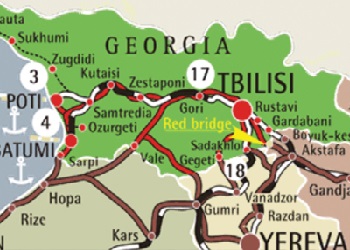- Details
The purpose of this report is to take stock of the existing regionally disaggregated data and to identify disparities between the regions of Georgia. Few similar studies exist, with the major exceptions being the Diagnostic Report by the Task Force for Regional Development in Georgia (2009) and the Georgia Urbanization Review by the World Bank (2013). This report thus fills a gap, attempting to inform both future research and the formulation of regional policy. The analysis in this report is mainly building on Geostat statistics, in particular the Integrated Household Survey, the Millennium Challenge Corporation Survey, and the Village Infrastructure Census. While in principle this allows for a detailed analysis of regional disparities, this is limited by issues with the data. Two issues are of importance. First, with the last census dating back to 2002, the reliability and quality of the current survey data is potentially compromised. Second, large and systematic data gaps exist for infrastructure, environmental issues, and cultural and recreational resources. It should also be noted that most surveys for any observation only indicate the region, but not the municipality. Thus any analysis is restricted to be along existing regional boundaries.
- Details
In the globalized world of today, increasing national competitiveness has become an important policy target for any country. While engaging in mutually beneficial trade, technological and cultural exchanges, countries find themselves in a race for scarce mobile resources such as financial capital and talent. Winning in this race are those locations that offer the best conditions for economic activity – skilled and disciplined labor force, high quality services and urban amenities, transparent and efficient public administration, etc. These locations – not only countries, but also regions and cities – serve as magnets for investment and people, and are able to grow and reach prosperity, the ultimate goal of economic policy.
- Details
In the context of the European Neighbourhood Policy, the EU and Georgia are in the process of negotiating an Association Agreement (AA) to replace the current Partnership and Co-operation Agreement (PCA). A Deep and Comprehensive Free Trade Agreement (DCFTA), underpinned by regulatory approximation, will be part of this AA. This study supports the negotiation process by analysing how the trade and trade-related provisions of the DCFTA will affect economic, social and environmental developments in the EU and in Georgia.
The main objective of this Trade Sustainability Impact Assessment (TSIA) is to assess the potential economic, social, environmental and human rights impacts of a Deep and Comprehensive Free Trade Agreement (DCFTA) to be negotiated between the EU and Georgia. This TSIA combines quantitative and qualitative research, in line with the general methodology designed for TSIAs by DG Trade. This methodology covers the following elements: screening and scoping analysis, scenario analysis and quantitative modelling, additional quantitative and qualitative social, human rights and environmental impact analysis, causal chain analysis and sectoral analysis.













